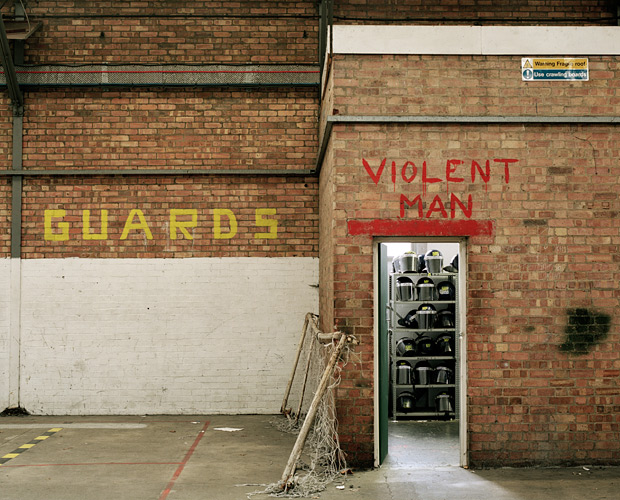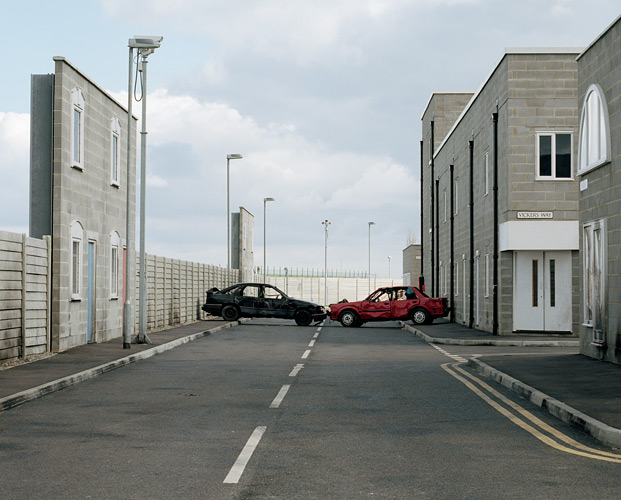
My first impression is of a film set for a dystopian future and then I thought that the set is too clean and artificial. the series is more like a record of a Stalin era training ground for spies than an actual training area of police or fire brigades in Northern Ireland. I wonder how effective the sets were and whether the trainees imagined themselves in episodes of The Prisoner. This is to say that despite the crashed cars, the images of burnt out buildings and so on, we are presented with a shocking reminder that no plan survives first contact with the enemy. We have all seen newsreel of actual riots, damage and destruction and it does not look like this.
On a personal note – I was a student in Paris in 1968-9. I saw riots, chaos and social disorder at first hand. I learned very quickly to run away from the CRS and their pickaxe handles. I see no hint of fear in Sarah Pickering’s images because we can see that the set is a sham. There is no evidence of tear gas, rubber bullets, blood, lost shoes, or water cannon.
If these images are a documentary about how to deal with social disorder their scope is too narrow to be effective. But they do say something about the openness of a society that can allow this kind of look behind the scenes. The context of the set is blurry and so is the narrative. this is not necessarily a bad thing. There is space for the viewer to reflect and make up their own mind about what they are being shown. Does the fact that the authorities gave permission for Sarah Pickering to take these photos and publish them indicate connivance or openness? I this why the scenes seem too clean?
Is this set of images misleading? I don’t think so. After all, there has to be something in front of the camera to make the image. However, the images are very carefully composed. Scenes are selected.
In this example, the two cars are central and at precisely the right distance from the camera to show the falsehood on the left and the presumed reality on the right of the picture. The photographic process contributes to the unreality and absurdity of the images and perhaps that is the point.
